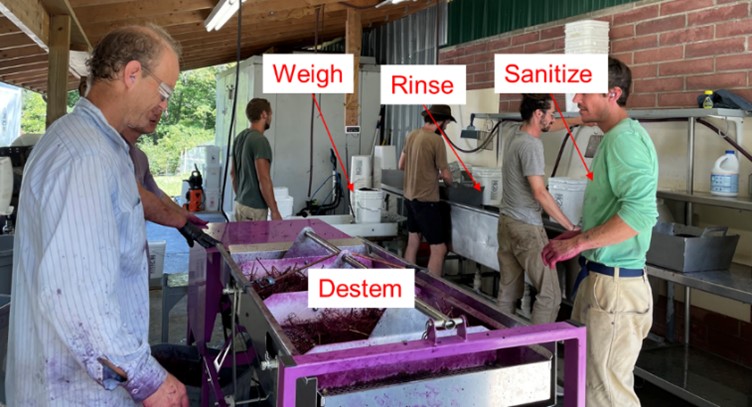Project Overview
Information Products
Commodities
- Fruits: berries (other)
Practices
- Crop Production: agroforestry, food processing, food product quality/safety
- Education and Training: farmer to farmer, on-farm/ranch research, workshop
- Farm Business Management: feasibility study
- Production Systems: agroecosystems
- Sustainable Communities: partnerships, quality of life
Abstract:
Emerging fruit crops, such as elderberry, are important value-added crops for small farmers in the rural areas of North Central Region (NCR). Adoption of those native fruit crops as commercial crops can increase farmers’ profit and benefit the sustainability of agriculture and ecosystem. However, low efficiency in harvesting and handling berries (fruits) is the biggest barrier for the development of elderberry industry. Elderberry farmers in Missouri have the developed destemmer to increase the efficiency in fruit removal, but manual handling (sanitizing, rinsing and weighing) is still labor intensive and slow. This project aimed to partner with local elderberry farmers to develop an automated elderberry handling system that could automate the destemming, sanitizing and rinsing procedures in fruit handling. A prototype of elderberry fruit handling system was developed and evaluated. Multiple education and extension activities were conducted to increase the awareness of such technology.
Project objectives:
Problem statement:
Current elderberry production includes cutting fruit clusters by workers at maturity time and destemming fruits for processing. Destemming process can be accomplished through available mechanical solution (destemmer) or by hand. Once the destemming is done, elderberry fruits must be washed and sanitized prior to selling or freezing to eliminate debris, insects, and unripe fruits according to FDA (Food and Drug Administration) guidelines. To wash the berries, they are placed in a container full of portable water where ripe berries sink to deep water, while insects, debris, and unripe berries float to the surface and can be skimmed off. Cleaned fruits are placed into a different container full of sanitizing solutions for sanitization, followed by rinsing, water dripping and weighing processes, as shown in Figure 1. The above fruit handling process requires a lot of manual labor, time, and money. Besides a long time working with water and chemical solutions, there is potential hazard to health workers. Moreover, in peak season, there is always a labor shortage.
Figure 1. The typical post-harvest elderberry processing processes, consisting of a destemming crew (1 – 2 persons) and a fruit handling crew (2 – 4 persons) for sanitizing, rinsing, and weighing elderberries.
The goal of this project was to partner with local elderberry farmers to develop an automated elderberry handling system that could automate the processes of destemming, sanitizing, rinsing, and weighing elderberry fruits. A prototype of an automated handling system was developed and evaluated. Multiple education and extension activities were conducted to increase the awareness of such technology.
The specific objectives of this project included:
- Survey different elderberry fruits delivery systems, including conveyor and auger systems.
- Develop and test different technologies (prototypes) to automatically handle elderberry fruits efficiently.
- Evaluate the efficiency of the developed system by comparing with manual operations.
